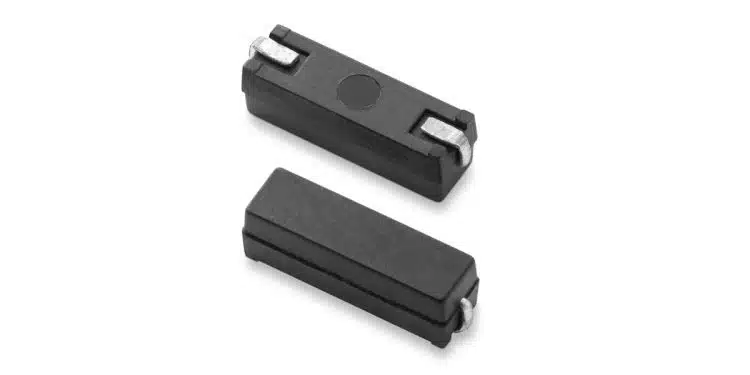Littelfuse, Inc., an industrial technology manufacturing company empowering a sustainable, connected, and safer world, introduces the 59177 Series ultra-miniature overmolded reed switch, offering designers unparalleled flexibility for space-constrained applications.
With its compact design and low power consumption, the 59177 Series reed switch provides a reliable solution for various high-speed switching applications.
The 59177 Series reed switch boasts an ultra-miniature size of 9.0 mm x 2.5 mm x 2.4 mm (0.354” x 0.098‘’ x 0.094”), making it the smallest overmolded reed switch in the Littelfuse product portfolio. Despite its tiny footprint, this switch can handle up to 170 Vdc or 0.25 A at up to 10 W, ensuring optimal performance in demanding applications.
One of the key advantages of the 59177 Series is its ability to operate without consuming any power, making it ideal for low-power applications. This feature saves energy and enhances the overall efficiency of battery-powered devices. Furthermore, the overmolded design of the switch ensures excellent mechanical shock and vibration resistance, providing designers with more flexibility for mechanically challenging applications.
In addition to its compact size and low power consumption, the 59177 Series reed switch offers several design, manufacturing, and end-user benefits. Its low-profile design enables seamless integration within space-constrained environments, while the SMD package allows for standard assembly mounting using a typical pick-and-place machine. The switch is also suitable for wet and harsh environments, ensuring reliable performance in various conditions. Furthermore, it guarantees no degradation in performance over the extended service life. It exhibits no leakage current in the ‘open’ state, making it an ideal choice for battery-powered IoT applications.
The 59177 Series reed switch is a valuable addition to the comprehensive Littelfuse product portfolio, catering to the needs of various markets and applications. Its design flexibility makes it a perfect fit for:
- security and access control systems,
- metering applications,
- battery-powered consumer electronics and wearables,
- factory automation,
- process equipment, and
- proximity and limit sensing.
Julius Venckus, Global Product Manager at Littelfuse, emphasizes the switch’s innovative design: “The 59177 is our smallest overmolded reed switch with J-type feet (lead) design. Its enhanced mechanical shock and vibration capability allows designers more flexibility for mechanically challenged applications, saving valuable space on the printed circuit board.”































